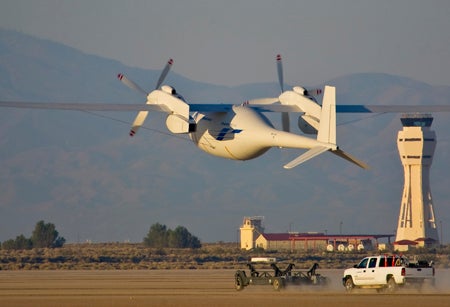
Boeing’s Phantom Eye unmanned airborne system (UAS) has completed its first autonomous flight at NASA’s Dryden Flight Research Center at Edwards Air Force Base, California, US.
Boeing Phantom Works president Darryl Davis said the flight puts Boeing on a path to accomplish another aerospace first, with the capability of four days of unrefuelled, autonomous flight.
During the 28-minute flight, the high-altitude, long-endurance system travelled atop its launching cart system and reached an altitude of 4,080ft and speeds of up to 62k. The UAS landed safely, despite sustaining minor damage to the landing gear from impact.
Phantom Eye program manager, Drew Mallow, said the flight demonstrated initial handling and manoeuvrability capabilities of the UAS.
"The team is now analysing data from the mission and preparing for our next flight. When we fly the demonstrator again, we will enter higher and more demanding envelopes of high-altitude flight," Mallow said.
How well do you really know your competitors?
Access the most comprehensive Company Profiles on the market, powered by GlobalData. Save hours of research. Gain competitive edge.

Thank you!
Your download email will arrive shortly
Not ready to buy yet? Download a free sample
We are confident about the unique quality of our Company Profiles. However, we want you to make the most beneficial decision for your business, so we offer a free sample that you can download by submitting the below form
By GlobalDataThe UAS had completed a series of taxi tests in April that validated its ground guidance, navigation and control, mission planning, pilot interface and operational procedures.
The liquid-hydrogen powered aircraft is designed to remain airborne for up to four days, while reaching altitudes of 65,000ft.
Capable of carrying a 450lb payload, the 150ft wingspan demonstrator is powered by two highly-efficient, 2.3lt, four-cylinder Ford Ranger truck engines and emits only water as by-product.
"While Phantom Eye is important for many reasons, future ISR, strike and bomber programmes also will benefit from the technologies we are developing and maturing for our customers," Davis said.
A series of other Boeing-funded rapid prototyping programmes include Phantom Ray, Echo Ranger, ScanEagle Compressed Carriage, and an associated Common Open Mission Management Command and Control (COMC2) system.
Boeing has worked closely with Ball Aerospace, Aurora Flight Sciences, Ford Motor and MAHLE Powertrain to develop the Phantom Eye.
Image: Phantom Eye takes off on its 28-minute autonomous flight. Photo: courtesy of Boeing.



